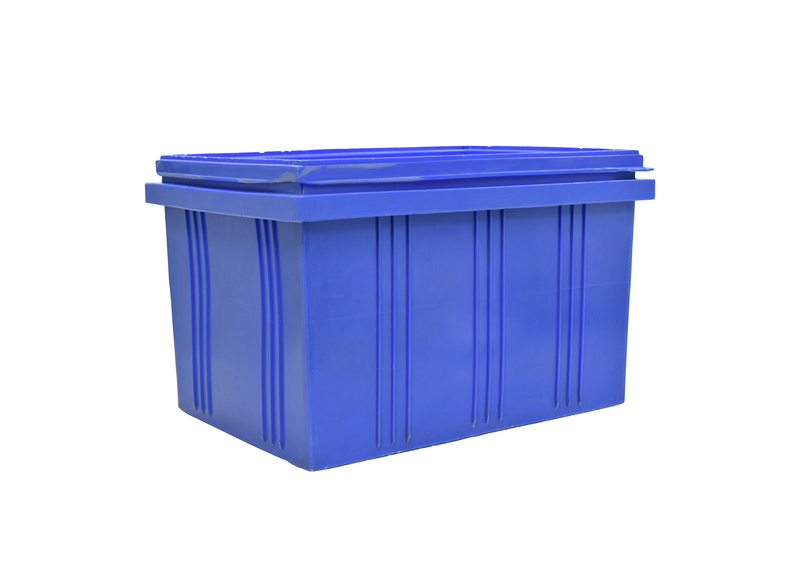How to Plan and Prepare Before Lifting Heavy Items Solo
Lifting heavy objects by yourself can be a tricky and potentially risky task if not done correctly. Proper planning, preparation, and technique are crucial not only for your safety but also to ensure the process is efficient and stress-free. Whether you're rearranging furniture, moving boxes, or handling equipment at work, knowing how to prepare before lifting heavy items solo is essential for preventing injuries and achieving success.

Why Proper Planning Matters Before Lifting Heavy Items Alone
Many injuries occur each year due to improper handling of heavy objects. The risk increases when lifting is performed solo, as there's no one available to assist or correct mistakes in real time. By taking the time to plan and prepare before lifting heavy objects by yourself, you can avoid common mistakes such as:
- Strains and sprains, especially in the back, shoulders, and knees
- Dropping and damaging items or property
- Fatigue and poor lifting form leading to long-term health problems
Proper preparation can make all the difference between a smooth moving experience and an accident waiting to happen. Let's explore how you can get ready to lift heavy items alone, step by step.
Assess the Situation Before Lifting Heavy Objects
1. Analyze the Weight and Shape of the Item
Every item is unique. Before you attempt to move anything, examine the weight, size, and shape of the object. Is it something you can realistically lift solo? If you have any doubts, err on the side of caution and seek help or consider using appropriate tools.
- Check for weight indications or manufacturer's labels
- Test gently by tilting the item to gauge its heaviness
- Consider awkward shapes, bulky sizes, or objects with shifting contents (like boxes with loose items)
2. Evaluate Your Own Physical Condition
Your health and fitness level play a critical role in safe lifting. Ask yourself:
- Have you had any back, knee, or shoulder injuries recently?
- Are you well-rested and hydrated?
- Do you have the necessary muscle strength for this job?
Never force yourself to lift something beyond your capability. Listening to your body is essential for avoiding injuries.
Plan Your Route and Destination
3. Clear a Path Before Moving Heavy Items
One of the most overlooked steps when preparing for heavy lifting is ensuring your path is obstacle-free. Before you begin moving any item:
- Remove rugs, cords, and clutter that could cause tripping
- Open doors, gates, or entryways fully
- Check for slippery spots or loose flooring
- Measure doorways, stairwells, and tight spaces to confirm the item will fit
4. Prepare the Destination in Advance
Know exactly where the item will be placed. This saves time and effort, and minimizes the risk of having to move it again later.
- Designate the space where you want to place the object
- Clear the area and make sure it's stable and safe for the item
- Have protecting materials (like mats or cloth) ready if needed
Select the Right Equipment and Gear
5. Use Appropriate Lifting Tools
When preparing to move heavy objects on your own, take advantage of tools and equipment designed to bear the brunt of the weight for you. Common lifting aids include:
- Dollies and hand trucks: Great for boxes and furniture, reducing strain on your body
- Furniture sliders: Ideal for shifting items across floors without lifting
- Lifting straps or moving harnesses: Help distribute the load and protect your back
- Work gloves: Improve grip and protect your hands from sharp edges
Even when lifting items solo, the right equipment can turn a difficult task into a manageable one.
6. Wear the Right Attire
Dressing appropriately may seem minor, but it can make a big difference when lifting heavy objects alone.
- Wear close-fitting, comfortable clothing that won't snag or restrict movement
- Choose sturdy shoes with good tread to prevent slipping
- Avoid sandals or open-toed footwear
Perfect Your Lifting Technique for Solo Heavy Lifting
7. Warm Up and Stretch First
Just like athletes warm up before a game, you should prepare your muscles before lifting heavy items. Simple stretches for your legs, back, and arms can reduce the risk of pulls and strains.
- Do gentle toe-touches, side stretches, and arm circles
- Try light squats to activate your leg and core muscles
Spend at least 5 minutes warming up before tackling heavier loads.
8. Master the Proper Lifting Technique
The most important part of preparing to lift heavy items by yourself is using correct lifting form to protect your back and joints.
- Bend at your knees and hips, not your waist. Keep your back as straight as possible.
- Keep the load close to your body to minimize strain.
- Lift using your leg muscles, not your back. Push through your heels as you rise.
- Avoid twisting your body while carrying the item. If you need to turn, move your feet instead.
- Keep your eyes looking forward, not down, to maintain proper posture.
Tip: If an item is too low, kneel on one knee rather than bending excessively.
Take Preventative Safety Measures
9. Know Your Limits Before Lifting Heavy Loads Solo
Sometimes, the best way to stay safe when lifting heavy items alone is to recognize when not to proceed. Lifting something that is too heavy can cause serious injuries that may take months to heal.
- If you feel uncertain, split the load into smaller parts if possible
- Seek out another person or professional help for items outside your capability
- Never hesitate to use technology or devices designed to move heavy objects safely
10. Take Breaks and Stay Hydrated
Fatigue is the enemy of safe lifting. When tired, your form will suffer and the risk of an accident increases. Remember to:
- Take regular short breaks, especially when handling multiple items
- Drink water to keep your muscles functioning properly
Repeated or prolonged heavy lifting should be avoided if you start feeling muscle fatigue.
Additional Tips for Safe Solo Lifting Preparations
- Communicate, even if you're solo: Let someone know you'll be moving heavy items, especially if you're home alone or at risk of becoming injured without immediate help.
- Keep your phone nearby: In case of emergencies, ensure you can call for assistance.
- Think about the weather: If moving outdoors, avoid doing so during rain, ice, or extreme heat for added safety.
- Plan extra time: Rushed moves are unsafe. Schedule your lifting when you have ample time and are not feeling hurried or distracted.
How to Prepare Your Environment for Solo Lifting
11. Adjust Lighting and Ventilation
A well-lit and ventilated environment prevents trips, falls, and overheating while you're lifting heavy items.
- Turn on all lights in hallways, staircases, and rooms on your path
- Open windows or doors for airflow if necessary
12. Stage Items in Advance
If possible, bring the heavy item closer to the exit or entry point prior to moving it. This can help you avoid complicated maneuvers while carrying the load. Pre-sort and label boxes so you know exactly which ones require extra caution.
What to Do If You Feel Strain or Pain During Lifting
If you experience sudden pain or discomfort while lifting, stop immediately and set the object down safely. Ignoring warning signs can lead to long-term injury.
- Take a break and assess your condition
- Apply ice or heat if soreness occurs post-lifting
- Seek medical advice if the pain persists or worsens

Recap: A Step-by-Step Checklist for Lifting Heavy Items Solo
- Assess your physical capability and the item's weight & shape
- Clear a safe path and prepare the destination
- Gather and use appropriate lifting equipment and protective gear
- Warm up your body and learn proper lifting technique
- Lift with your legs, keep your back straight, and avoid twisting
- Work within your limits and ask for help if needed
- Take breaks, stay hydrated, and pay attention to your body's signals
Conclusion: Smart Preparation is the Key to Lifting Heavy Objects Alone
As you can see, preparing before lifting heavy items solo involves more than just brute strength. It's about thinking ahead, using the right techniques, and putting your safety first. Whether you're moving house, rearranging your office, or handling bulky equipment, following these preparation steps will ensure you handle heavy loads safely and efficiently.
By evaluating the object and your ability, planning the route, equipping yourself with the right tools, and using smart lifting strategies, you can confidently manage heavy items without risking injury. Remember, when in doubt, don't hesitate to seek help--it's always better to be safe than sorry.
For more tips on how to prepare for heavy lifting, lifting heavy items safely, and preventing injury when lifting solo, bookmark this guide and revisit it whenever the need arises.
```


